Concrete Patios in Chandler AZ
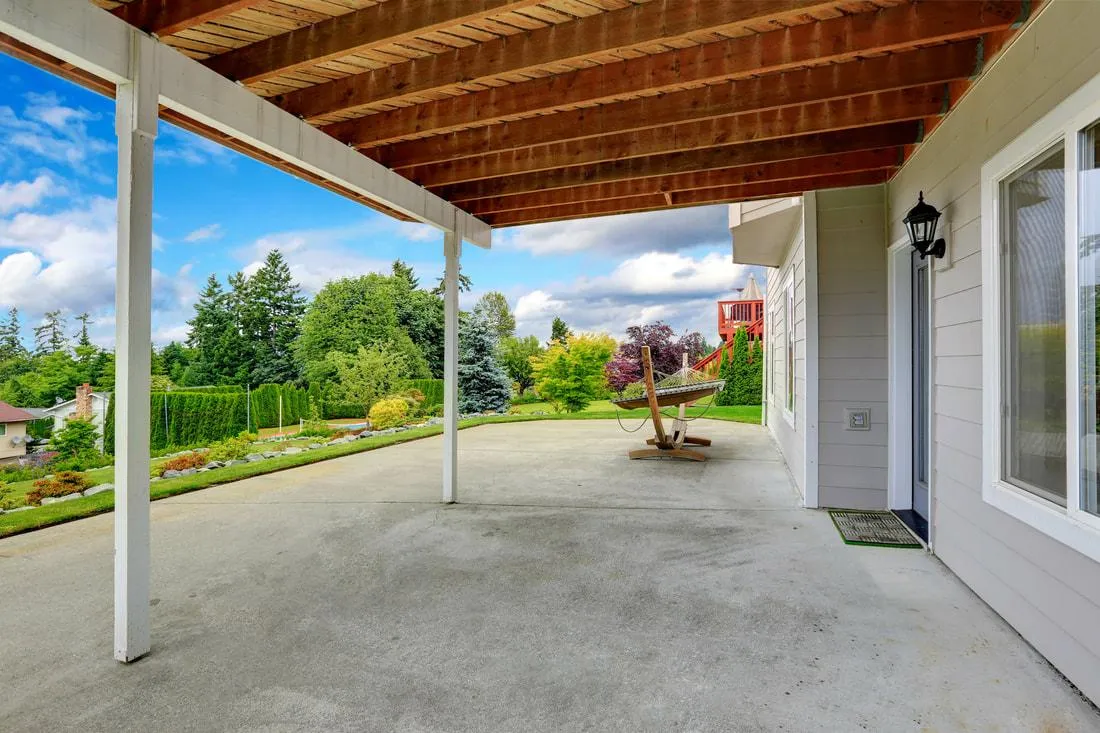
Our certified concrete specialist at Chandler Concrete Solutions will provide you with a free quote for installing a concrete patio in Chandler. The process begins by excavating the soil to about 8 inches deep. Then, using a long straight 2x4, dig the interior of the patio. You should also have a level and a plate compactor handy.
Concrete is an excellent material for patios because it does not require a lot of maintenance. Unlike other patio materials, concrete only needs to be cleaned and sealed once every year. Moreover, it is cheaper than other options. Concrete patios are also mold and allergen-free, which means that you can use them all year long without worrying about allergies. And because of their versatility, you can create your own patio design. Whether you want a traditional concrete patio or a modern patio with a fusion of materials, a concrete patio in Chandler AZ can be a great choice.
For a more sophisticated patio, consider installing a decorative stencil finish. This will add a touch of art to your patio. The contractor can even create customized stencil designs for you. The cost for a decorative stencil finish is anywhere from $1 to $10 per square foot. You can also choose to have your patio stained or stamped.
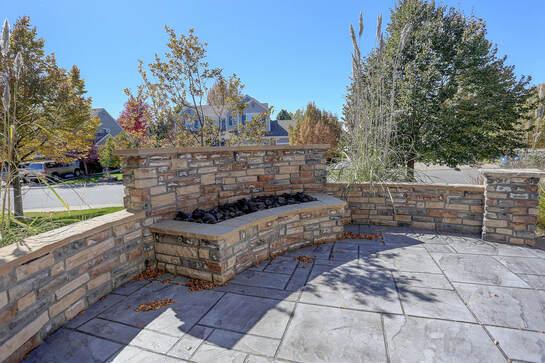
Using a sealant on concrete patios can help prevent damage from heavy objects. Although concrete is resistant to the elements, it can still crack or shrink due to normal wear and tear. However, you should be careful when using products that contain ammonium nitrates and sulfates, as these chemicals can cause the sealant to corrode or lose its sheen prematurely. Similarly, you should also avoid using deicing salts on your patio. These substances can damage the concrete surface, particularly the sealant.
Concrete is an excellent material for patios because of its ability to blend in with the landscape. It can even be patterned to look like wood, stone, or marble. Its versatility also allows you to add other features, like benches, planters, or extra steps. You can customize a concrete patio to match the style of your home and exterior décor. Concrete patios are relatively inexpensive compared to other patio paving materials. The cost will vary depending on the size, style, and location. A typical patio costs between $3 to $6 per square foot. However, if you want to have design elements like flowers or benches, you will need to spend extra money. You should also be sure to get a permit, as it is required in some cities. A permit can cost an extra $150 to $300.
When deciding how to construct a concrete patio, it is important to consider the amount of weight it will bear. The strength of the slab is directly related to the amount of reinforcement, the thickness of the concrete, and the amount of area it covers. If you want to build a patio that supports a lot of weight, you should increase the thickness and use high-strength concrete. This type of concrete has a strength rating of 5 to 6,000 PSI. You may also want to add reinforcing mesh or rebar. This will help provide tensile strength and support varying pressure across the slab. In addition to the durability of plain concrete, you can also choose to use stamped concrete. It is more attractive than plain concrete and will blend in with the surrounding décor. It is easier to install than other types of concrete and less expensive. Furthermore, it will last for decades if you maintain it properly. Stamped concrete is also environmentally friendly. It is more affordable than stone and pavers. It has a high-end appearance and requires less maintenance.
Lastly, concrete patios are a great way to add value to your home. They can be less expensive than other types of materials, but the initial cost is significantly higher than that of brick and crushed limestone. And with recent lumber prices going up, it's important to consider the cost of installing a concrete patio. Concrete patios can add substantial value to your home and are easily accessible. Adding a concrete finish can also help minimize the risk of tripping hazards. Depending on the type of concrete that you choose, the price of your concrete patio will vary considerably. The thickness of your concrete slab is also important as it will affect the durability of the patio. You'll also want to consider the quality of concrete and the ratio of ingredients. The grade of concrete determines how hard it will be after it dries. If you want your concrete patio to last for several years, look for a mix that includes reinforcing fibers.
Maintenance Tips For Concrete Patios
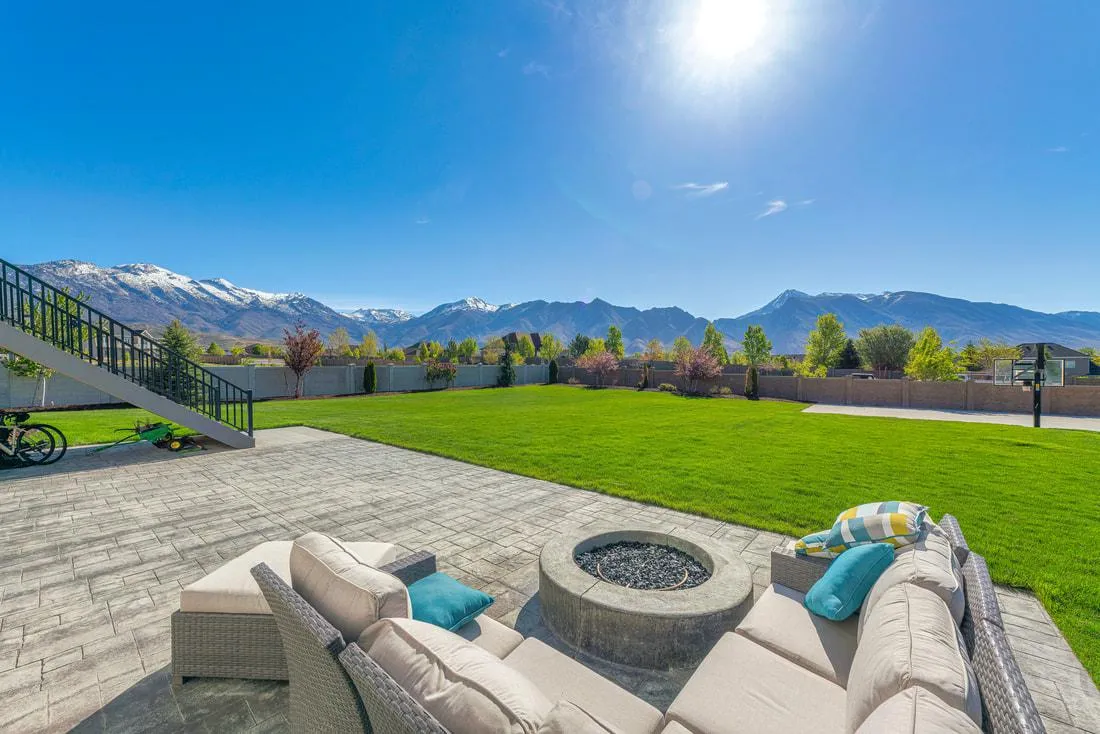
There are several different ways to maintain concrete patios. Some of these methods include the use of a sealer, polishing or waxing stamped concrete, and not using destructive chemicals. For more information, read on. These maintenance tips will help you keep your concrete patio looking its best. After following them, you'll be able to enjoy your patio for years to come.
Keep It Clean
There are a variety of products that you can use to clean your concrete patio. You can use Dawn, Ajax, or muriatic acid to clean stains, and you can also buy products at home supply stores. Just make sure to wear protective clothing and follow the directions on the container. Afterward, you can rinse the area with water.
Bleach is a powerful cleaning agent that will work to remove tough stains. You can use a spray bottle or bucket to mix the solution. Then, spray the solution on the stained area. You should allow it to work for about 10 minutes before rinsing the area with water. However, you should wear rubber gloves while you are working. If the stain is very difficult to remove, you may want to use a power washer instead. You should also remember to rinse the patio completely after using the bleach. In order to keep a concrete patio looking clean, follow some easy maintenance tips. First, you should remove all leaves and foliage from the area. This will prevent runoff. Next, you should apply a cleaning solution made of one part vinegar and one part baking soda to the concrete. Then, use a push broom to rub the mixture into the surface. You should allow the solution to stay on the concrete for about 15 to 30 minutes before wiping it off. Hydrogen peroxide is another great cleaning solution for concrete. It is readily available in grocery stores, home improvement stores, and pharmacies.
While you may be tempted to use an acid cleaner, you should avoid this. Although it is highly effective, it can leave the concrete patio smelling and looking stained. You can also use bleach to get rid of tough stains on concrete. But, remember that bleach should be the last option when it comes to cleaning stains. Using bleach to clean a concrete patio is not a safe option for any outdoor space, especially if you have small children or pets. A safer option would be hydrogen peroxide, which is oxygenated and safe for plants and pets. It works well with baking soda and dish soap.
Apply Sealer
There are a few ways to apply a sealer to concrete patios. These can range from a simple paint roller to a high-performance concrete sealer. In most cases, you can apply them yourself. Common types of sealers include acrylic resin, penetrating, water-based, and epoxies. There are some high-performance concrete sealers, however, which require professional application and the use of special tools. These products are not usually used in residential spaces.
Before applying a sealer, you should clean the concrete patio thoroughly. This prevents stains from setting in. It also prevents water from penetrating the concrete. You should also consider the color of the concrete. Some sealers have a high gloss finish and can improve their color. However, they will require repeated applications over time. Applying sealer to concrete patios can prolong the service life of stamped concrete and protect it from the elements. Typically, experts recommend using a film-forming, penetrating sealer. If your patio is new, you should wait until it has cured before applying a sealer. Most contractors recommend waiting seven to 14 days, but the official curing period is 28 days.
Before applying a sealer to your concrete patio, make sure it is completely dry. If the concrete is porous, you might want to consider adding anti-skid material to prevent slipping. Once the surface is dry, use a nap roller to apply the sealer. Apply it slowly and in sections of about two feet by four feet. Apply the sealer when the air temperature is above 55 degrees. Cooler temperatures will produce better results.
Avoid Destructive Chemicals
When it comes to maintaining your concrete patio, you should avoid using harsh, destructive chemicals. These chemicals can harm the concrete and remove its sheen prematurely. A good rule of thumb is to avoid products containing sulfates and ammonium nitrates. Also, be sure to avoid using deicing salts, which can damage your patio's sealant.
To clean your concrete, you can use a standard garden hose or a pressure washer. If you have a hard time cleaning the surface yourself, you can scrub the concrete using liquid dish soap. You can also use a stain remover to get rid of stains. Make sure to follow the manufacturer's instructions for cleaning concrete to ensure the durability of your investment.
In some cases, it is necessary to use aggressive cleaning methods to remove stains. You can try a solution of one cup of degreasing detergent and a gallon of water. Using a stiff broom, you should apply the solution after saturating the concrete and soil. While concrete patios are built to withstand heavy loads, they can be damaged by the wrong chemicals. Use only chemicals that are made specifically for your surface type. The wrong chemicals can destroy the sealer and damage the concrete itself. Some de-icing products are also harmful to concrete. If you must use a de-icing product, use it sparingly and only when absolutely necessary.
You can also use power washing equipment, but you need to be careful of the pressure setting. The pressure can damage the concrete. Organic stains, like dog urine, can be especially difficult to remove. Concrete degreaser and soap are not appropriate to clean organic stains from concrete. However, a bleaching solution can remove stains.
Polish or Wax Stamped Concrete
Polished or waxed stamped concrete is an attractive and durable option for your patio. It features intricate details on the surface, which are often incorporated with coloring to complement your decor. This type of patio is far more attractive than plain concrete, and it can be more affordable than other materials. Plus, it requires less maintenance and is environmentally friendly.
When it comes to choosing the right color, there are a few things to consider. You want to choose a durable color. One of the most common types is integral color, which is the color that runs through the slab and is permanent. Another type of color is an antiquing release color. These are typically powders or liquids and are applied to the surface of freshly-poured concrete. One of the most popular decorative concrete techniques is stamping. This technique involves creating a pattern by pressing a rubber stamp into fresh concrete. This process can be done on a newly laid patio or an existing patio. If you are using an existing concrete pad, you can add another layer of concrete or overlay mixture. Stamped concrete is extremely durable. If you want to make your patio look more unique, you can use coloring techniques.
While the durability of stamped concrete is comparable to traditional concrete, some designs can be more susceptible to damage because of the surface. For example, some designs are not suitable for heavy-traffic areas, while others may develop thin edges prone to cracking. To choose the right stamp design, consult a stamped concrete specialist. These professionals will help you decide which design is appropriate for your concrete, traffic pattern, and exposure levels.
Provide Overhead Cover
Patio covers are a great way to protect your outdoor living space. Patio covers can be designed with ceiling fans, overhead lighting, and insulated roof panels. These patio covers are great for keeping your outdoor living area cool and comfortable in the evening. They also complement existing patio features, like a fountain. In addition, they are easy to install and maintain, which makes them the ideal option for protecting your patio. If you have a concrete patio, you can build an overhead patio cover. This type of structure is designed to support a combined "dead" and "live" load of up to 750 pounds. However, the foundation must be solid and the slab must be at least 3 1/2 inches thick. For this reason, a structural engineer should be consulted to ensure that the existing structure can support the added load factor.
A patio cover can be attached to a house or can be free-standing. In the case of a freestanding patio, the cost will be considerably higher. Fortunately, patio covers are available in a wide range of styles and materials.
Reasons to Choose a Concrete Patio
Concrete patios offer many advantages including durability and design flexibility. These benefits have made concrete a popular choice for patios, and have made it the surface of choice for many concrete contractors. Nowadays, concrete is not only used for sidewalks and driveways but is also used for upgrading patios.
Stylistic Versatility of Concrete
Concrete is a versatile material, allowing homeowners to customize it to fit their home style. Concrete slabs can be stamped or brushed to mimic other materials, including wood or brick. They can also be colored to match the rest of the house's exterior décor. Moreover, concrete is relatively low-maintenance and only needs regular cleaning. It is also a much less expensive option than other materials.
Staining or dyeing concrete gives the surface a unique color that matches the exterior of your home or landscape. It also adds cohesiveness to the patio. You can choose a color to match your home, or you can add a geometric pattern to the concrete surface. Concrete is an incredible material that has endless design options. It is also functional and easy to maintain. While it is a great choice for a patio surface, it is not for every style. Some homeowners prefer rustic or wood-like designs. In those cases, you may consider using other materials, such as bricks.
Concrete can be stained or dyed to give it a custom color. The dyes penetrate the concrete slab's surface to produce a bold, saturated color. The stains react with the concrete's chemicals, giving it natural-toned hues and gradients. In addition to staining, you can use concrete stamps to imitate brick or stone slabs, tile, or geometric patterns.
Concrete patios can be aesthetically appealing and can function as an outdoor living room or gathering area. These surfaces seamlessly merge interior and exterior living spaces. They can also accommodate a fireplace or water feature. Because of their versatility and low-maintenance, concrete patios can easily match the style of the house. Choose from a traditional or contemporary design to find a patio that suits your home and style.
Concrete is also an excellent choice for patios and other backyard projects. Aside from replacing an old patio, concrete is an excellent material for driveways, walk paths, pool decks, and other hardscapes. It can also be used for interior surfaces, such as countertops.
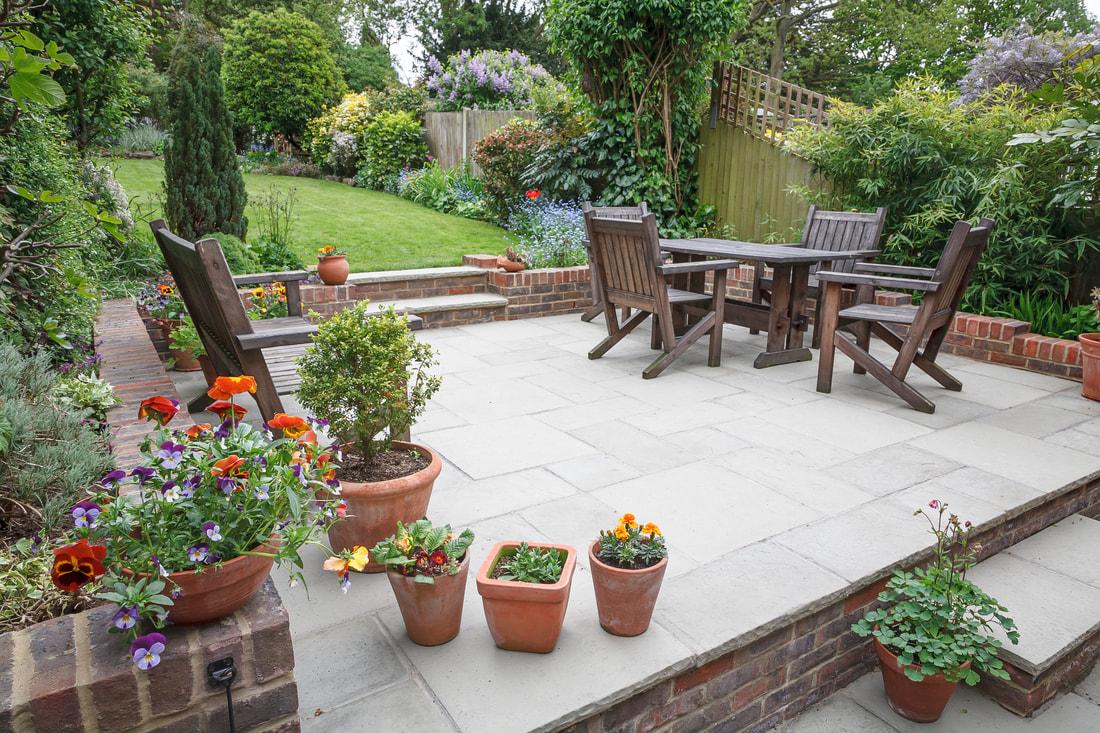
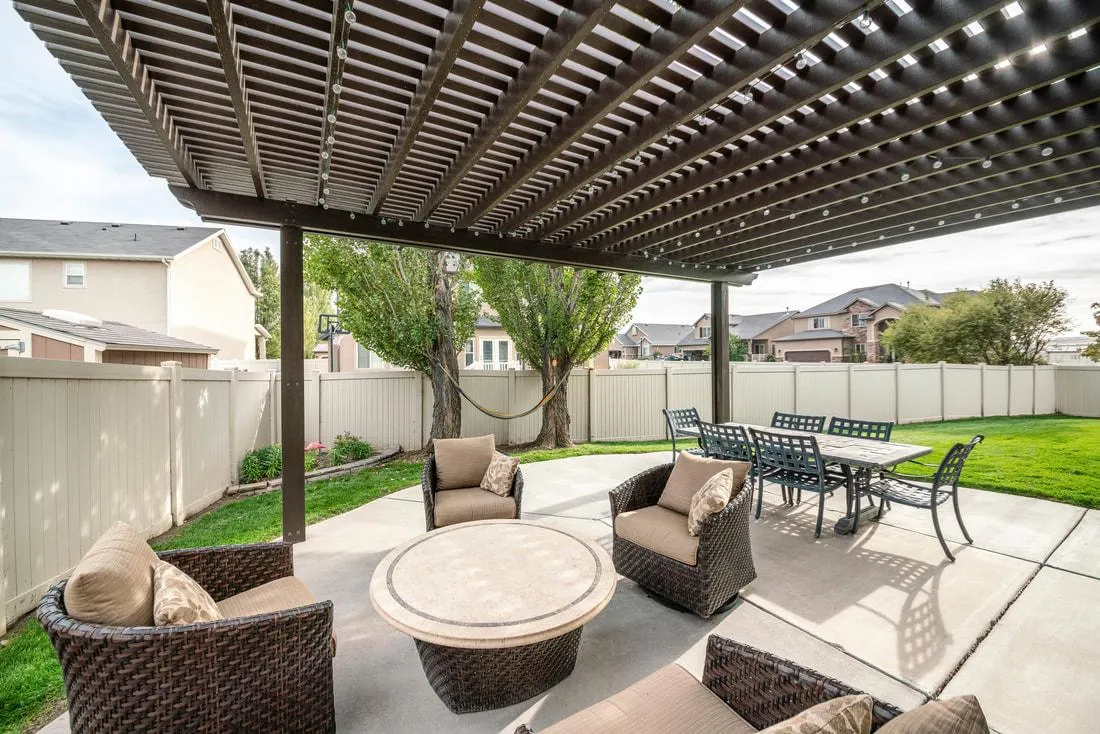
Cost Savings
Choosing a concrete patio surface can be very cost-effective, especially when compared to other materials. Natural materials like stone and wood tend to be more expensive and require more labor. But stamped concrete can be almost one-third less expensive than other materials. Plus, stamped concrete comes in a variety of designs and patterns that can mimic many other surfaces.
The price of a concrete patio surface depends on many factors, including how large the slab is. A large slab requires more concrete, while a smaller one requires less. It is important to use a concrete calculator to determine the exact amount of concrete needed for your project. Another factor that will affect the cost is the design of your patio. A simple square or rectangular shape is cheaper to build than a curve. More complex designs and intricate custom features will add to the cost.
Concrete is a durable material that requires little maintenance. Unlike wood, concrete patios do not require resealing, restaining, or regrouting. Its high strength can last for decades. Concrete patios are relatively inexpensive and require little maintenance. Unless you want to stain it every few years, resurfacing your concrete patio should cost around $3 to $7 per square foot. In addition, the cost of sealant is relatively inexpensive. If you are concerned about tripping hazards, consider refinishing your concrete patio.
Concrete can be stained or stenciled to add texture and aesthetics to your patio. This option, however, costs anywhere from $1 to $10 per square foot and requires frequent pressure washing and resealing. While concrete stenciling can be expensive, it delivers an aged craftsman's look that will last for many years.
Prices will also vary depending on where you live. If you live in an urban area, the costs of labor and materials are higher. In rural areas, the cost of materials may be higher due to travel fees. Getting multiple quotes will help you find the best deal and determine your budget. Then, you can use a concrete patio cost calculator to help you determine how much to spend on the project.
Longevity
While concrete is very durable, the concrete patio can wear out and crack over time. This is due to the presence of mineral content and environmental conditions. Fortunately, there are many maintenance and repair options available for patio surfaces. These options range from simple pressure washing to applying a patio coating to help protect your concrete from damage.
A concrete patio surface can last for decades if properly installed. In fact, concrete patio surfaces are able to withstand the elements for up to three decades without losing their structural integrity. In addition to this, concrete patio surfaces can be enhanced with steel reinforcement. These rebars and joints ensure that the surface will remain strong over time.
Another option is stamped concrete, which is much more durable than plain concrete. This type of concrete is designed to mimic the appearance of brick and concrete pavers. In addition to providing a beautiful surface, stamped concrete can withstand heavy traffic and the demands of children and pets. Concrete patio surfaces are often a great choice for outdoor living spaces, but they can also show signs of wear and tear after many years of use. The presence of mineral content and environmental conditions can lead to cracks, splits, and staining. In order to maintain a beautiful and long-lasting patio, you should repair any cracks or deterioration as soon as possible.
Another advantage of concrete patio surfaces is their affordability. They are relatively inexpensive compared to brick or crushed limestone. However, their initial installation costs are more expensive than the latter two options. In addition, the longevity of concrete patio surfaces depends largely on the quality of the concrete used and the proportion of its ingredients. Generally, the grade of concrete is determined by its strength 28 days after it sets.
A concrete sealant can prolong the surface's lifespan. In addition, polishing will restore its shine and reduce wear patterns. While polishing is not essential to extend a concrete patio's lifespan, it is worth considering as a way to add extra protection.
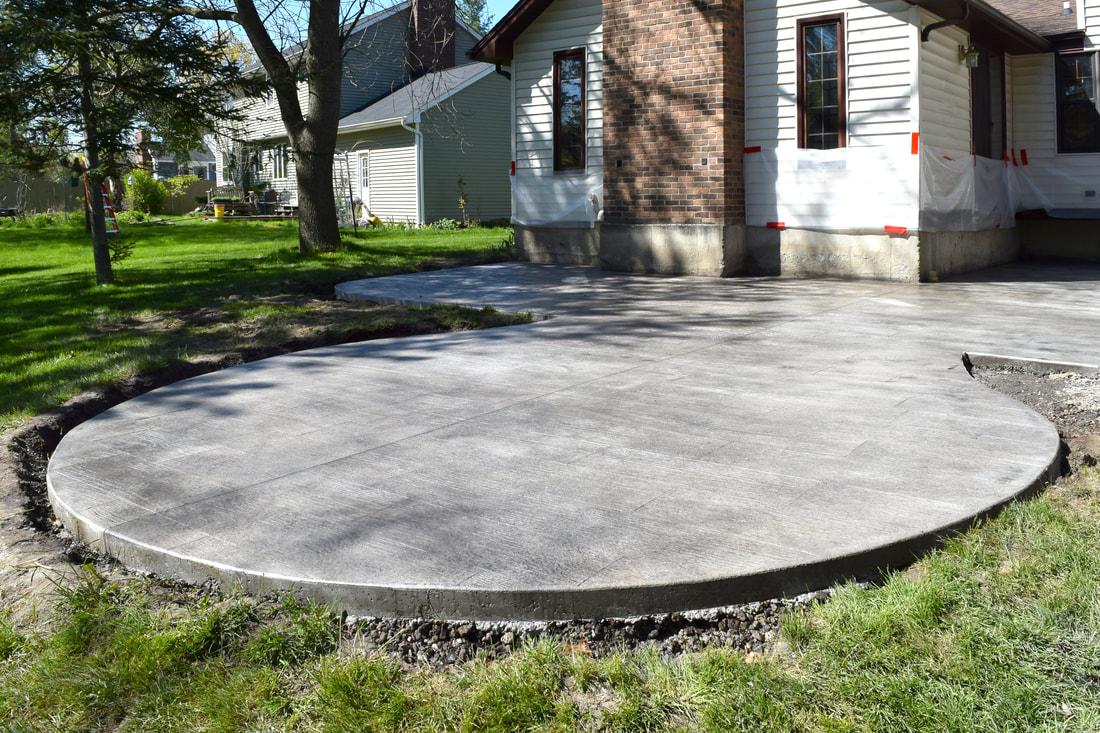
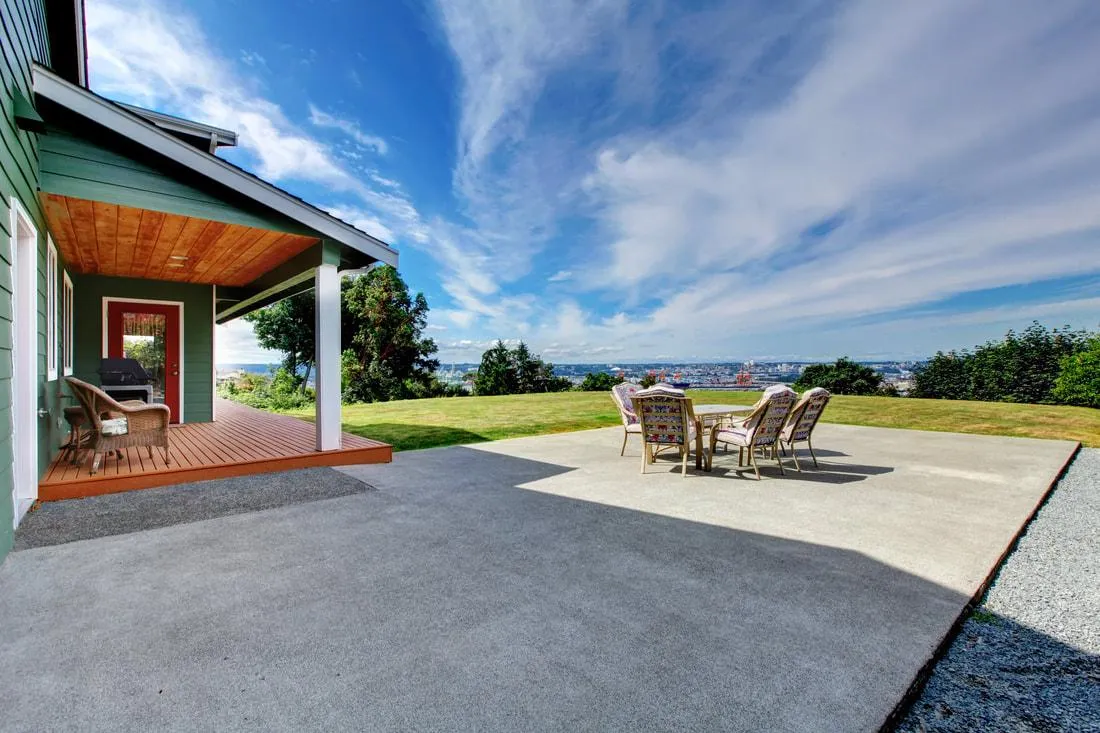
Durability
Whether you're looking for a beautiful, functional surface or an environmentally-friendly choice, concrete patio surfaces can last decades. They can withstand harsh climates and can even be reinforced with steel rebar. Despite its durability, concrete will eventually crack. In extreme temperatures, concrete will shrink and expand. If it cracks, it may be necessary to replace it with new concrete. However, this process can be expensive and can compromise the design of your patio.
Pavers are generally more durable than concrete patio surfaces, but they can still develop cracks. These are not a dealbreaker, but they can be unsightly. Moreover, repairing cracks requires patching the surface, which makes the repair difficult. In addition, the repair isn't always possible to conceal the patch, so it affects aesthetics. If your budget allows, consider switching to pavers or other natural stone patio surfaces instead. These types of surfaces tend to last longer and are a more natural choice.
Concrete patios are another popular option for outdoor spaces. Compared to natural stone, concrete is incredibly durable and requires minimal maintenance. Additionally, you can mix and match concrete with wooden decking and patio furniture, so you can use your patio for a variety of purposes. Although concrete patios have long been considered a durable choice, you should be aware of their limitations. For one thing, concrete will crack over time, especially if you live in an area where the winters are unpredictable and thaw and freeze conditions are common. This can make a concrete patio an unsuitable choice for your home, especially if you have young children.
Concrete and pavers are the most common patio materials, as they are easy to install and come in various shapes and sizes. They can also be embossed to simulate natural stone, wood, or slate. These materials can be shaped and textured with the help of tools and mortar, which makes them a versatile option. Concrete patios are also the least expensive to build, and they last for years.
Concrete patios can last for 30 years or more, and unlike wooden decking, they don't sink or warp in harsh weather conditions. They are also resistant to heavy patio furniture, foot traffic, and pets. Additionally, stamped concrete doesn't allow weeds to grow through it.


